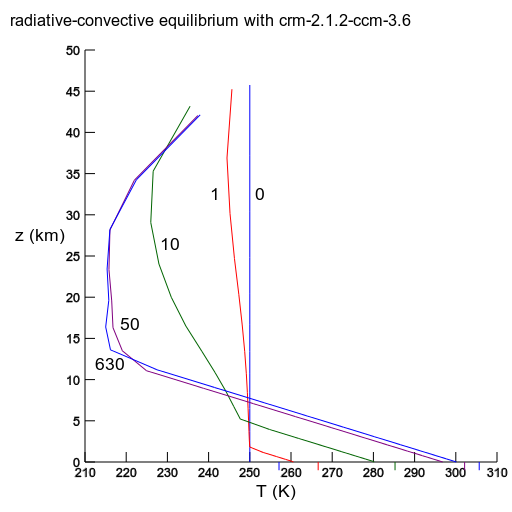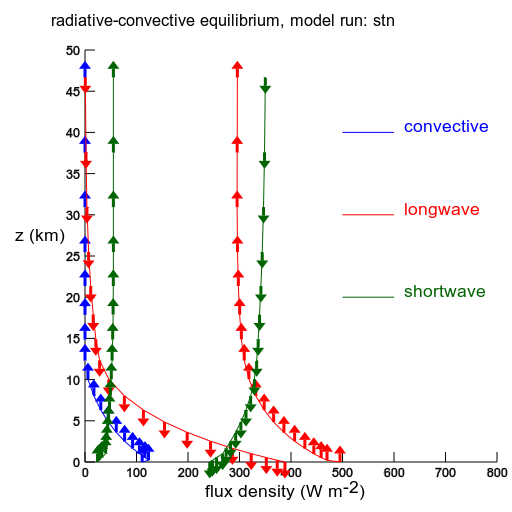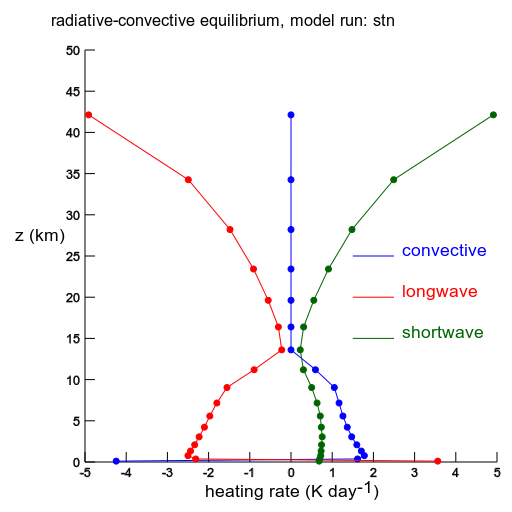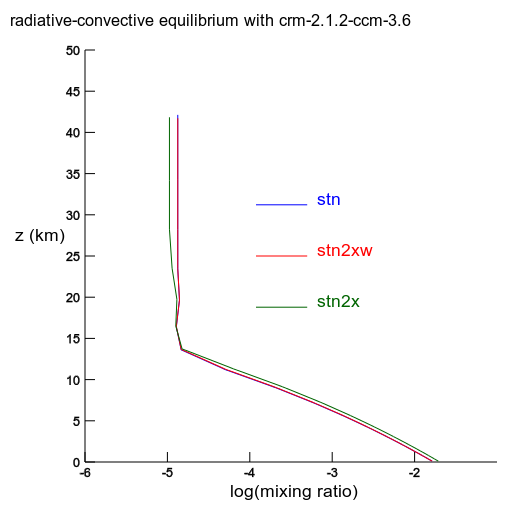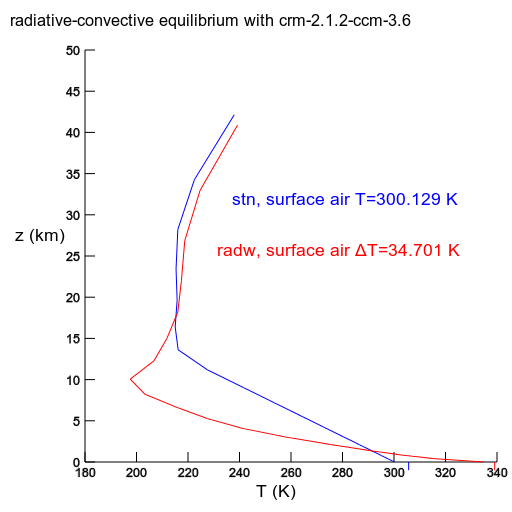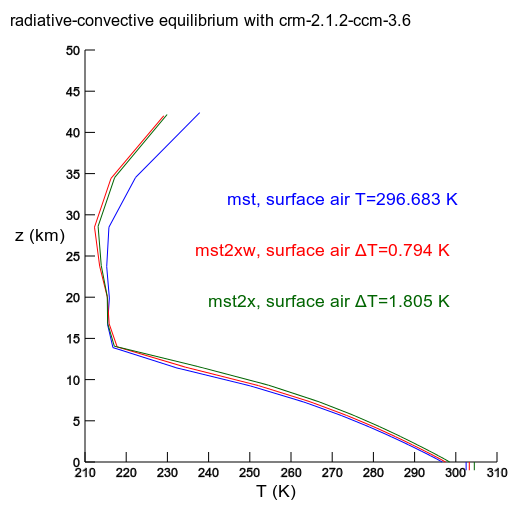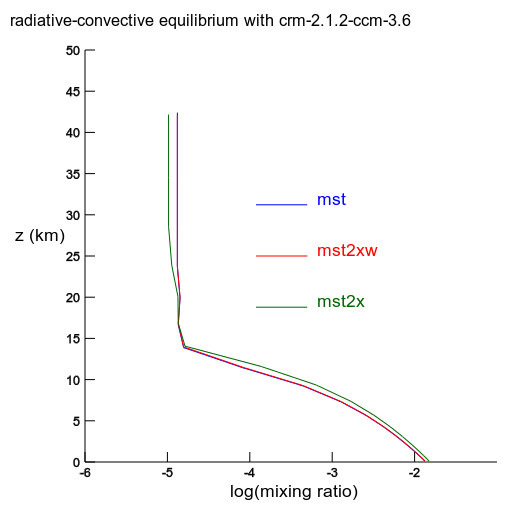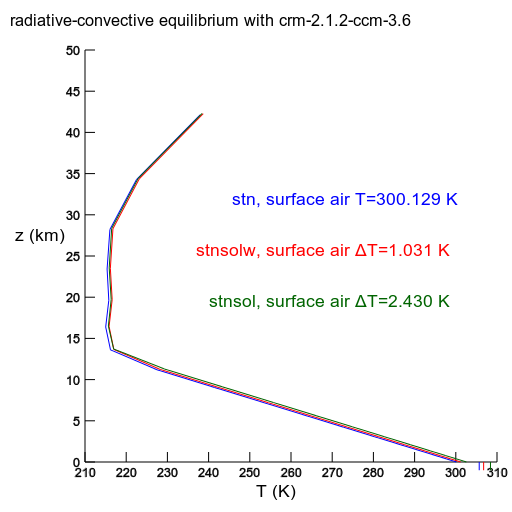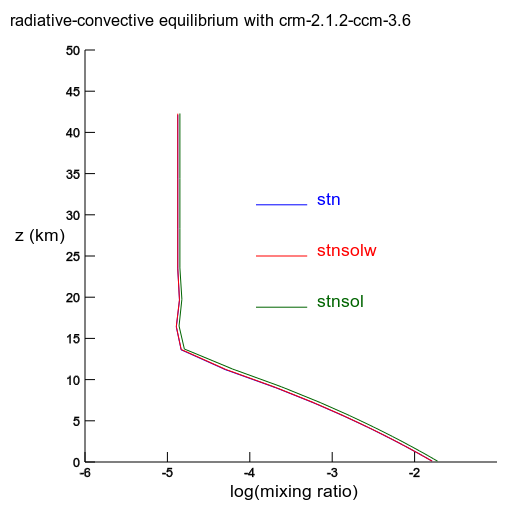Table of Contents
Radiative Convective Equilibrium
Here is the code: radcon_2025.tar.gz crm_2025.tar.gz
This page describes a series of simulations
with a radiative convective model (RCM), run out to radiative convective equilibrium.
The RCM is based on the CRM radiation code ,
that has been offered online for almost a decade. (The model results shown here are
based on the revised code, as described at that site). The RCM is written in Python.
The RCM code uses Python's subprocess module to send the input file and retrieve
the output file, without actually writing it to disk. Python's text handling
abilities are well suited for constructing the text input files and then parsing
through the output file to find the heating rates that are used to update the
temperature. Typically, the RCM calls the CRM 2000 times, and updates the temperatures
with a half-day time step.
The RCM model extrapolates the temperature profile, which is from the mid-points of the levels, to a surface air temperature. (Oddly, the surface air temperature in the CRM input file is not actually used by the CRM. The skin temperature is what is actually important and is used by the CRM.) The surface air temperature is then used to calculate the sensible heat flux as:
SENSFLUX = SENSFLUXCOEF*(TSKIN-TSURAIR)
where the default value for SENSFLUXCOEF is 20 W m-2 K-1.
When water vapor is allowed to adjust, it adjusts to keep the relative humidity at 68% times pressure/(surface pressure). Except, where temperature has begun to increase with height, the specific humidity from the lowest temperature layer is retained. (This is the so-called tropopause cold trap). Optionally, specific humidity can be retained from a previous model run, and required to remain invariant in time.
Model labels:
- stn, standard lapse rate of 6.5 K km-1 is used for the convective adjustment
- mst, moist adiabatic lapse rate is used for the convective adjustment
- rad, no convective adjustment, and no sensible heat flux from the surface
- 2x, $\mathrm{CO}_2$ is doubled from 355 ppmv to 710 ppmv
- w, specific humidity if being held constant, from a previous model run
- sol, downward solar radiation at the top of the atmosphere increased by 5%
Standard
- model label: stn
- Convective adjustment with the standard lapse rate.
- Note: the final input file to the CRM, and thus one consistent with radiative convective equilibrium, is offered at CRM Online as
radconeq.in.
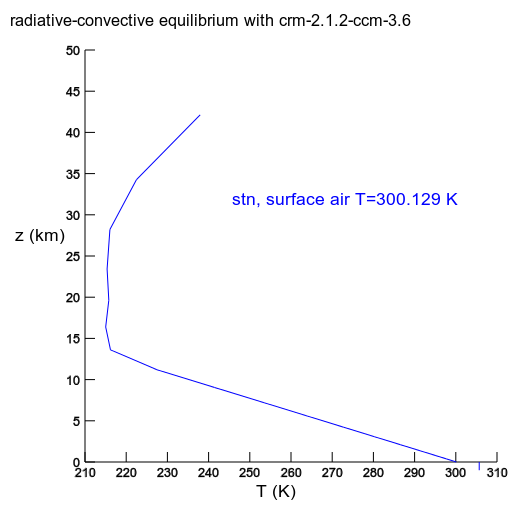 |
|---|
| stn: The equilibrium profile profile at 630 days. Final flux balance at the top of the atmosphere is within 0.1 W m-2. The downward blue tick mark at 305.7 K denotes the skin temperature. |
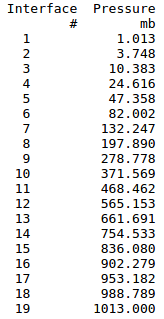 |
|---|
| The pressure levels of the flux density calculations are listed. They remain constant throughout the model run. |
Double CO2
* model label stn2xw: with specific humidity retained (from stn) * model label stn2x: with relative humidity specified (specific humidity adjusting)
Turn off convection
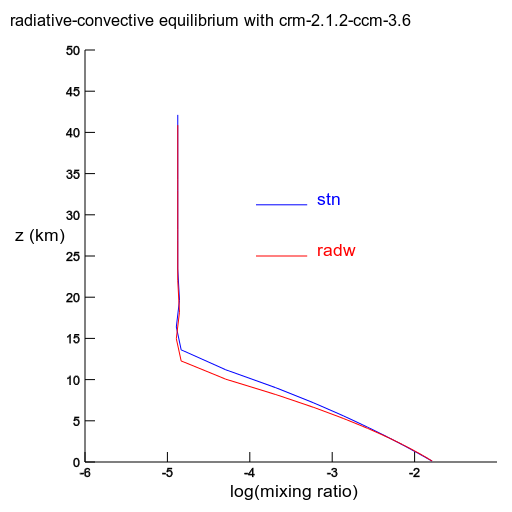 |
|---|
| Specific humidity is invariant. If plotted with respect to pressure levels, these curves would overlap. But, being plotted with respect to z levels, they don't. |
